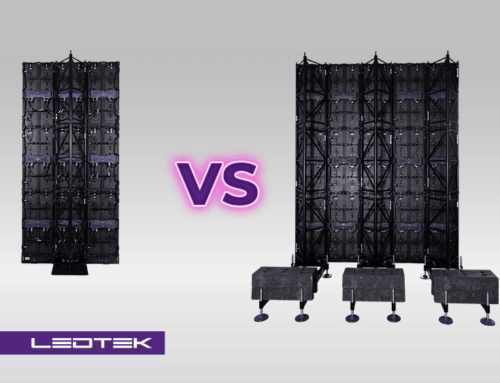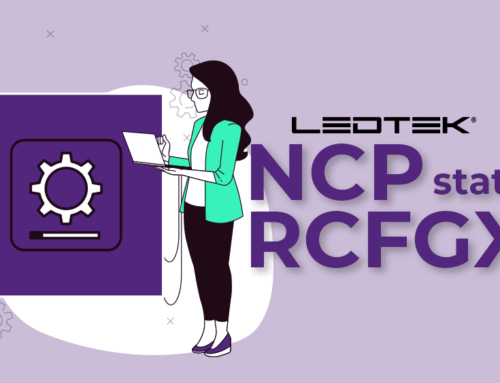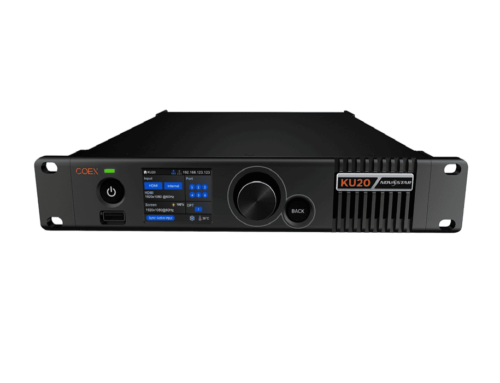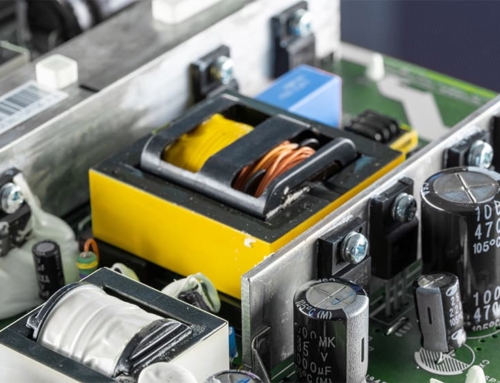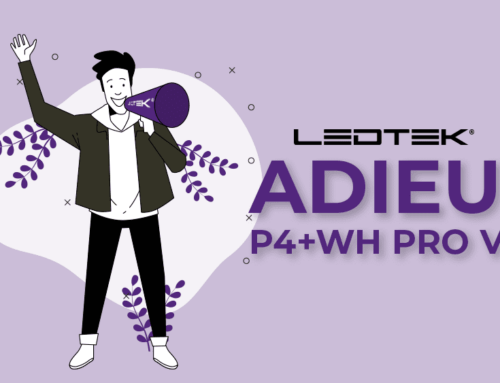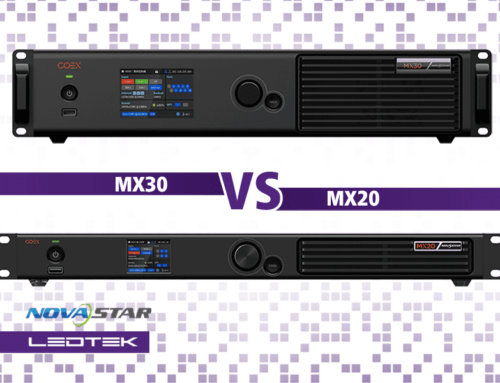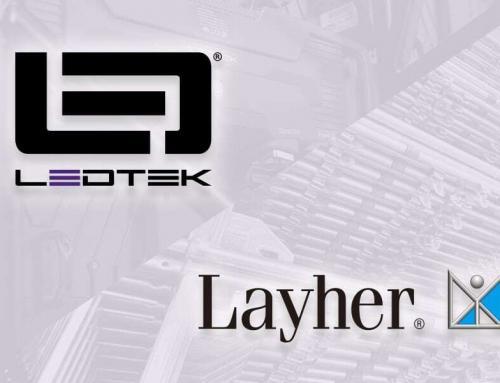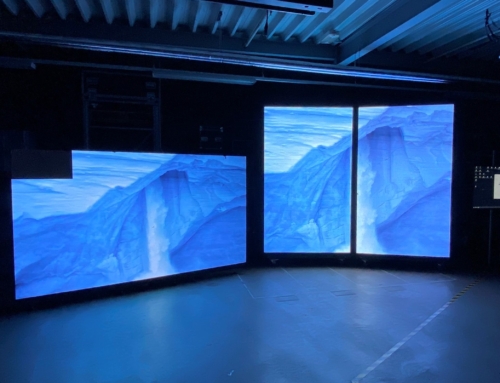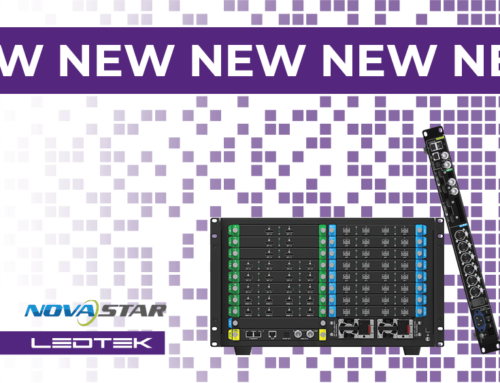There are different possibilities for displaying images. Depending on the event, some fit better than others. We already compared traditional video walls, i.e. LCD screens, and LED walls, recently.
This time we want to compare the possibilities with a beamer to those of an LED wall.
How does an LED wall even work?
Our customers often ask us if our LED walls are bright enough for indoor use. We can answer this question with a simple “yes”. Our indoor walls have a luminosity of ca. 1200 nits. Our outdoor walls have up to 5000 nits. But what exactly is a “nit”? The word is derived from Latin “nitere”, which means “to shine”. It is a unit for luminance and can be equated with a “candela per square meter” (source). A “candela” (lat. wax candle), however, is equivalent to the luminosity of a normal candle (source). Thus, 1200 nits have the luminosity of 1200 candles.
LED walls have their own light source: the LEDs (read more about it here). The surface that shows the image shines actively. This causes contrasts that are easily created. In the areas where deep black is supposed to be shown, the LEDs stay switched off.
From our customers’ experiences we can say: our LED walls are well equipped with 1200 nits, even to shine bright enough when there is ambient light in the room. Most of the time, only 40-50% of the overall luminosity need to be exhausted. Like this, the walls offer enough room to change the luminosity upwards as well as downwards. It happens occasionally that our Indoor walls are used outdoors. Depending on the daylight situation, their brightness is strong enough for that.
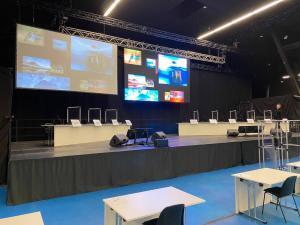
Comparison of an LED wall and a beamer, source: Mediatec (E)
And what about a beamer?
The beamer works with a different basic principle. The beamer projects onto a white surface, like this the picture becomes visible. There is a variety of beamers with different brightness levels. As an example, you can see a beamer of a luminosity of 12,000 ANSI Lumen in the picture. Here, a different unit is used in order to express the light output. The name ANSI Lumen is composed of “ANSI”, hence the “American National Standards Institute” and the term “Lumen”, a photometrical unit for the luminous flux. ANSI Lumen therefore means that the beamer was tested on its conformity with the ANSI standards (source).
In the event industry, beamers from 12,000 to 15,000 ANSI Lumen are standard. With 12,000 ANSI Lumen, the beamer shown in the picture is already pretty bright compared to other beamers that only manage a couple hundred ANSI Lumen. What can easily happen with a beamer: when trying to balance the ambient light by stronger brightness, but still creating a strong contrast, the colours might be displayed quite divergently. A white spot in the picture can appear rather blueish or blackish. Clear, bright colours could be lost.
Conclusion
As mentioned in the beginning, the decision for one or the other possibility depends on the event and the venue. These two factors decide whether a beamer or an LED wall is the variation worthwhile. When it comes to the resolution and the costs, the beamer can surely convince. The best results of a beamer can be achieved if the venue can be shaded accordingly. For outdoor use, a beamer is not the convincing solution during the day. In this case, an LED wall is appropriate. LED walls can perfectly be used as stage background, as the stage lighting does not at all have a negative influence on the clarity and chromaticity of the shown picture. Also, LED walls can be used in the light and in the dark and are therefore the perfect allrounder. As there are different pixel pitches and it depends on the distance of the viewer to the wall, convincing solutions regarding the resolution can be found here as well.
We would be happy to help finding the perfect product for you or answer your questions regarding LED technology. You can give us a call at +49 551 492 493 44 or send an email to vertrieb@ledtek.de.


